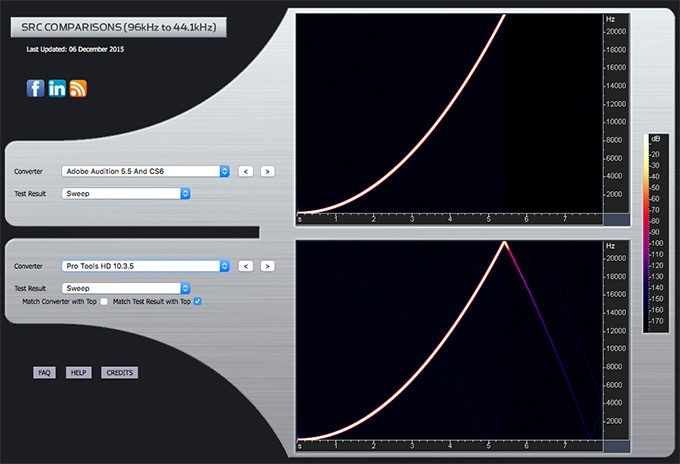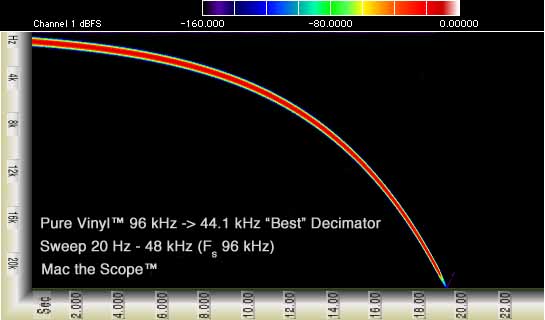

- How to convert 44.1 khz audio to 48khz premiere zip#
- How to convert 44.1 khz audio to 48khz premiere free#
How to convert 44.1 khz audio to 48khz premiere zip#
There’s also the issue of file corruption which is common in ZIP transfers. 7Z (7-zip files) are two of the most common file types associated with malicious attachments, and are more likely to be caught in spam filters. You can email your zipped files, but keep in mind security firm F-Secure has found that. Zipping or otherwise compressing large audio files can shrink your files to a more manageable size, but isn’t so great when you need to transfer them to someone else.
Direct Stream Digital ( DSD ) (hi-res): A file format used by Sony and Philips to write audio to Super Audio CDs (SACDs). Apple Lossless Audio Codec ( ALAC ) (hi-res): If AAC is an Apple-friendly version of the MP3, ALAC is the equivalent for FLAC files: Compressed, lossless, high-quality audio with metadata. How to convert 44.1 khz audio to 48khz premiere free#
Free Lossless Audio Codec ( FLAC ) (hi-res): A royalty-free codec that uses lossless compression to provide hi-res audio quality at a far smaller file size – plus, it can also store metadata. Audio Interchange File Format (AIFF) (hi-res): Similar to WAV files in that they offer high-quality sound that’s lossless and uncompressed. The big drawback of WAV files (along with their girth) is that they don’t support metadata such as song titles or album art very well. Makes for some pretty big files, which is why WAV files are almost always immediately converted by casual users into MP3s or AACs.  Waveform Audio File Format (WAV) (hi-res): CD-quality, lossless, uncompressed audio. Advanced Audio Coding (AAC) (standard): Another file type that uses lossy compression, but with slightly better sound quality than an MP3. MP3s feature small file sizes but relatively low sound quality. MP3 (standard): Mentioned above, the extremely common MP3 file uses lossy compression and is the workhorse of the audio file world-it gets the job done, but isn’t extremely sexy. Adding channels to an audio file typically doubles that file in size: A 10 MB mono file will take up 20 MB in stereo. The standard bit depth of CD-quality audio is 16, while most hi-res audio files are 24 bit.īitrate : The audio file’s rate of data transfer, typically represented by kilobits per second (kbps) or megabits per second (mbps).Ĭhannel count : This refers to the number of audio sources within an audio signal (the most common channel count, stereo sound, uses two channels, while mono sound uses one). 192 kHz, a sampling rate sometimes seen in hi-res audio, equals 192,000 samples per second (the most common sample rate is 48 kHz).īit depth : Audio bit depth measures the number of bits of data within each sample. This refers to the number of samples of the audio signal taken per second when converting that signal from analog to digital, typically expressed as samples per second in Hertz. Sample/sampling rate : Here’s where things get somewhat technical.
Waveform Audio File Format (WAV) (hi-res): CD-quality, lossless, uncompressed audio. Advanced Audio Coding (AAC) (standard): Another file type that uses lossy compression, but with slightly better sound quality than an MP3. MP3s feature small file sizes but relatively low sound quality. MP3 (standard): Mentioned above, the extremely common MP3 file uses lossy compression and is the workhorse of the audio file world-it gets the job done, but isn’t extremely sexy. Adding channels to an audio file typically doubles that file in size: A 10 MB mono file will take up 20 MB in stereo. The standard bit depth of CD-quality audio is 16, while most hi-res audio files are 24 bit.īitrate : The audio file’s rate of data transfer, typically represented by kilobits per second (kbps) or megabits per second (mbps).Ĭhannel count : This refers to the number of audio sources within an audio signal (the most common channel count, stereo sound, uses two channels, while mono sound uses one). 192 kHz, a sampling rate sometimes seen in hi-res audio, equals 192,000 samples per second (the most common sample rate is 48 kHz).īit depth : Audio bit depth measures the number of bits of data within each sample. This refers to the number of samples of the audio signal taken per second when converting that signal from analog to digital, typically expressed as samples per second in Hertz. Sample/sampling rate : Here’s where things get somewhat technical. 
File duration/length : The length of the audio file in hours, minutes, seconds and (if necessary) milliseconds.







 0 kommentar(er)
0 kommentar(er)
